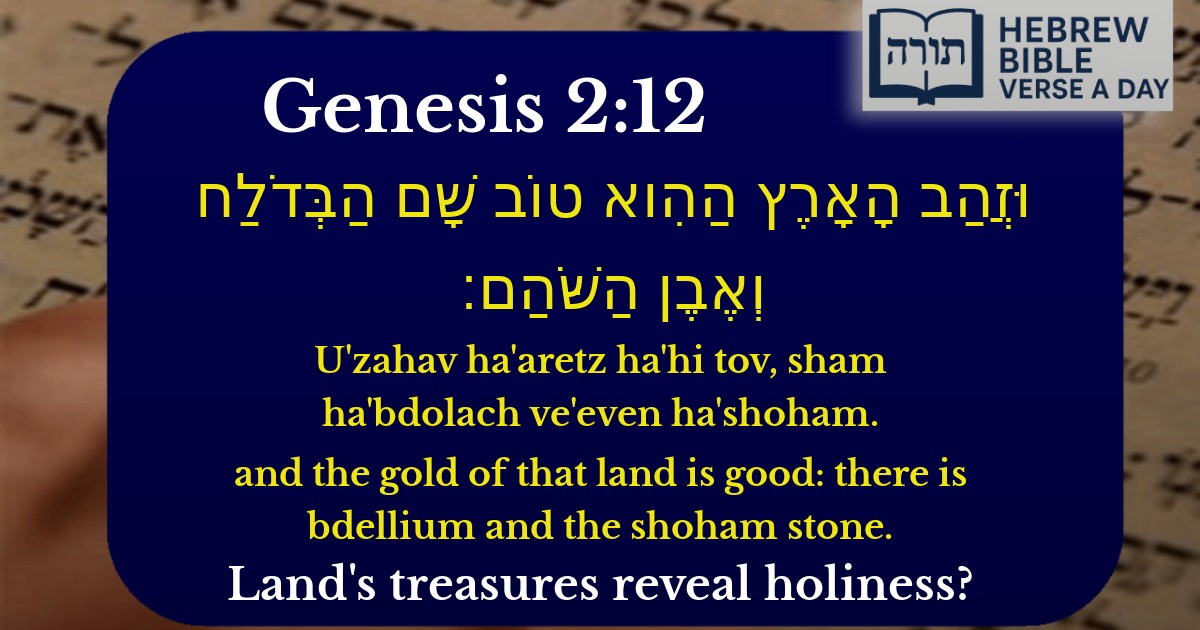Join Our Newsletter To Be Informed When New Videos Are Posted
Join the thousands of fellow Studends who rely on our videos to learn how to read the bible in Hebrew for free!
Hebrew Text
וּזֲהַב הָאָרֶץ הַהִוא טוֹב שָׁם הַבְּדֹלַח וְאֶבֶן הַשֹּׁהַם׃
English Translation
and the gold of that land is good: there is bdellium and the shoham stone.
Transliteration
U'zahav ha'aretz ha'hi tov, sham ha'bdolach ve'even ha'shoham.
Hebrew Leining Text
וּֽזְהַ֛ב הָאָ֥רֶץ הַהִ֖וא ט֑וֹב שָׁ֥ם הַבְּדֹ֖לַח וְאֶ֥בֶן הַשֹּֽׁהַם׃
וּֽזְהַ֛ב הָאָ֥רֶץ הַהִ֖וא ט֑וֹב שָׁ֥ם הַבְּדֹ֖לַח וְאֶ֥בֶן הַשֹּֽׁהַם׃
🎵 Listen to leining
Parasha Commentary
📚 Talmud Citations
This verse is not quoted in the Talmud.


Interpretation of the Gold, Bdellium, and Shoham Stone
The verse describes the exceptional quality of the gold and precious materials in the land of Havilah (Bereshit 2:12). Rashi explains that the phrase "the gold of that land is good" indicates that the gold was of superior quality, perhaps even naturally refined, unlike gold from other lands that requires purification. This aligns with the Midrash (Bereshit Rabbah 16:2), which states that the gold was so pure it resembled the gold used in the construction of the Mishkan (Tabernacle).
The Significance of Bdellium (בְּדֹלַח)
Bdellium is a rare aromatic resin or gemstone mentioned in the Torah. According to Ramban (Nachmanides), it may refer to a precious stone or a fragrant gum resin. The Talmud (Yoma 75a) suggests that the manna given to the Israelites in the wilderness resembled bdellium in appearance, as described in Bamidbar 11:7. This comparison highlights its purity and divine connection.
The Shoham Stone (אֶבֶן הַשֹּׁהַם)
The shoham stone is traditionally identified as onyx, a precious gemstone. Rashi notes that this stone was later used in the choshen (breastplate) of the Kohen Gadol (High Priest), as mentioned in Shemot 28:20. The Midrash (Shemot Rabbah 38:9) teaches that the shoham stone symbolizes clarity and divine wisdom, as it was one of the stones representing the tribes of Israel.
Spiritual Lessons from the Verse